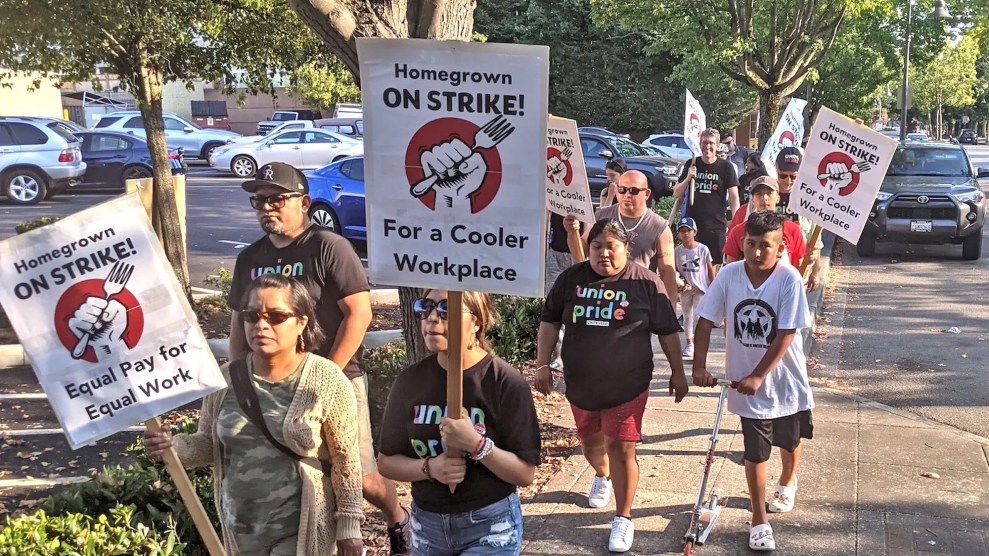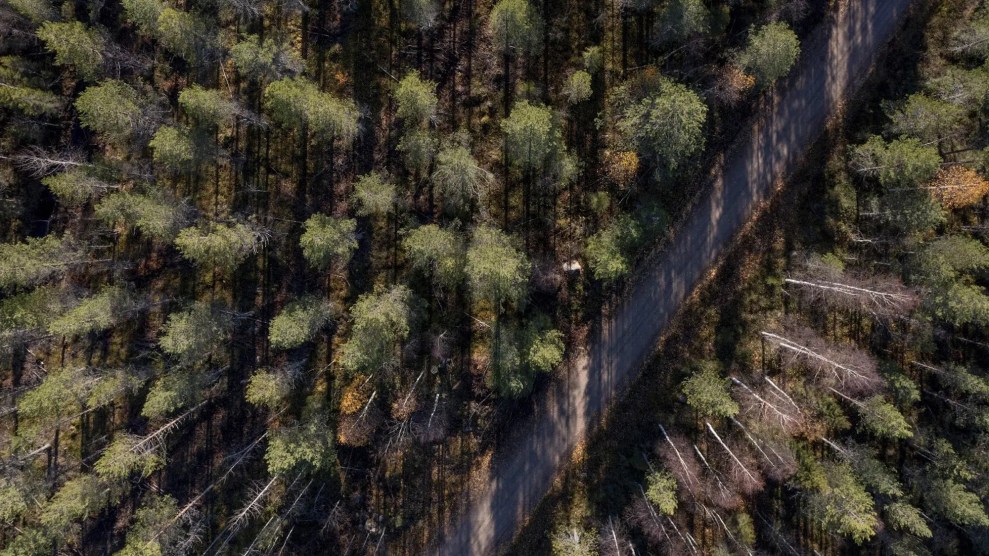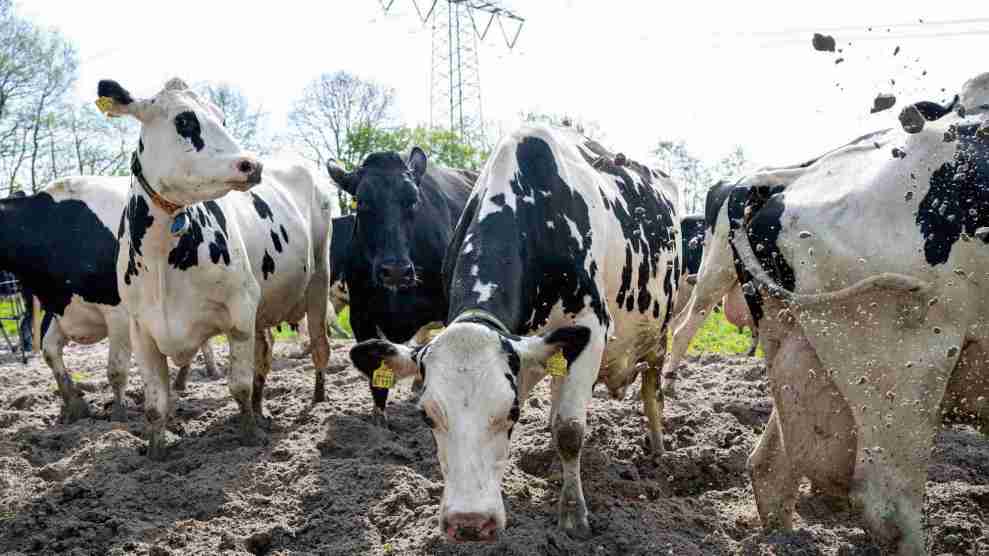
<a href="http://www.flickr.com/photos/gregoryjordan/4735058616/sizes/m/in/photostream/">Gregory Jordan</a>/Flickr
In 1968, India’s farmers cranked out a record-setting wheat crop at a time when many observers feared the nation would plunge into famine. That triumphant harvest represented the culmination of decades of work by a group of foundation-funded US technocrats. Their effort, which became known as the “green revolution,” still casts an imposing shadow more than four decades later.
Its technological architect, the Nobel laureate Norman Borlaug, was all but beatified upon his death in 2009. In its obituary, Reason Magazine proclaimed him “the man who saved more human lives than anyone else in history,” while The New York Times wrote that he “did more than anyone else in the 20th century to teach the world to feed itself.”
Meanwhile, the powerhouse funding institution most associated with the Green Revolution, the Rockefeller Foundation, has joined forces with today’s richest funder, the Gates Foundation, to recreate Borlaug’s magic in Africa. Their “Alliance for a Green Revolution for Africa” push got a de facto endorsement from President Obama when he tapped Gates’ chief ag-development man, Rajiv Shah, for a top research job at USDA. Today, Shah serves as director of United States Agency for International Development (USAID).
Thus the “green revolution” idea still percolates in high-level development policy circles. But if our top foundations and development policymakers are pushing to recreate the green revolution for an entire continent, than it’s worth figuring out precisely what led up to that famous bumper crop nearly half a century ago—and what it means for the future. In his 2010 book The Hungry World, the University of Indiana historian Nick Cullather does just that.
Cullather’s book amounts to a thorough, gracefully written debunking of what might be called the green revolution master narrative, which goes something like this: In the 1940s, US foundations and policymakers became concerned about population growth and hunger in Mexico, so they sent Borlaug and other ag wizards south of the border to help farmers ramp up food production; Borlaug and crew succeeded dramatically; and then took their innovations to south and central Asia, where they averted a massive famine in the late ’60s and set the table for food security thereafter.
But the canonical Green Revolution account crumbles under Cullather’s gaze. His brilliant, concise early chapter on the Green Revolution’s birth in Mexico anchors his broader argument. In 1941, when the Rockefeller Foundation sent its first set of ag technologists south of the border, Mexico was hardly a seething hotbed of population overshoot and food scarcity, Cullather shows. Quite the opposite, it was a net food exporter, sending vegetables, fruit, cattle, and coffee to the United States. The USDA had deemed it “largely self-sufficient” in food and fiber, he reports; and population, while growing, was less dense than than that of its would-be savior, the United States.
Moreover, the US’s own recent foray into high-production agriculture had delivered ambiguous results. Pushed by government and university researchers, US farmers had in recent years ramped up production dramatically. The result was a collapse in prices and a “paradox of plenty”—millions of farmers driven to ruin or near ruin by low prices, alongside millions of consumers unable to afford enough to eat. At the height of the Great Depression, Cullather reports, government agents were buying cows in Kansas for $16 and shooting them on the spot—a desperate attempt to keep prices from plunging further. This was the system that the Rockefeller Foundation wanted to export to Mexico?
Well, not at first. Cullather shows that the Rockefeller strategists’ motivations were muddled from the start—and variable. Spooked by war and fascism in Europe and Communism in Russia, the foundation’s leaders concluded in 1939 that “US postwar security would require, at minimum, holding an area comprising the entire British Empire plus the Far East and South America.” Rising peasant populations and stagnant agriculture in those areas gave rise to Malthusian visions of social chaos—and the idea that rural reform might be able to resolve the problem.
 Mexico, which had only a decade before emerged from its own political revolution, made an attractive laboratory for testing that idea. Its population largely made up of peasant farmers, Mexico represented for the Rockefeller team “a type of backwardness that could be found throughout the colonial areas of the world,” Cullather writes. There were practical considerations, too. Mexico was selling supplies to the Axis Powers in war-torn Europe; and had recently confiscated oil fields once controlled by Standard Oil, source of funds for the Rockefeller Foundation. A bit of cash for agricultural improvement seemed like a wise investment for future good will.
Mexico, which had only a decade before emerged from its own political revolution, made an attractive laboratory for testing that idea. Its population largely made up of peasant farmers, Mexico represented for the Rockefeller team “a type of backwardness that could be found throughout the colonial areas of the world,” Cullather writes. There were practical considerations, too. Mexico was selling supplies to the Axis Powers in war-torn Europe; and had recently confiscated oil fields once controlled by Standard Oil, source of funds for the Rockefeller Foundation. A bit of cash for agricultural improvement seemed like a wise investment for future good will.
The foundation set up the Mexico Agricultural Program in 1941. Its technologists were looking beyond that nation’s borders from the start. Cullather quotes Borlaug himself on his experience on the ground in Mexico: “We were consciously, and very early…discarding those things that fit only one environment.” The concept of grand, one-size-fits all “solutions” for agriculture had been hatched.
Crucially, though, the initial fixation was not on boosting yields for the sake of boosting yields. Instead, the foundation at first sought to stabilize rural areas by “raising incomes and living standards for farmers.” The vision was a kind of “mini-New Deal” for the Mexican countryside, one that “other ‘backward countries’ could emulate,” Cullather reports.
It was FDR’s vice president, the Iowa agriculturalist and former USDA secretary Henry Wallace, who convinced the foundation to focus on crop yields. Wallace had toured the Mexican campo in 1940 and came away impressed by the ingenuity and diligence of the small-scale farmers he observed, Cullather writes. But he found their productivity to be shockingly low; and concluded that they needed “improved seeds” and other agri-technologies then taking root in Wallace’s native Iowa. Urged on by Wallace, the Rockefeller team pivoted, and the new mission became to dramatically ramp up the productivity of Mexico’s farmers. This new path led Borlaug and his team to what would become known as the “Green Revolution package”—hybridized “dwarf” grain varieties, bred to produce bumper crops when given lavish doses of fertilizers, pesticides, and irrigation.
And here is where Cullather’s critique is damning. Borlaug’s innovations in Mexico, impressive as they were technologically, were “an answer in search of a riddle,” he argues. That is, they focused on problems that didn’t exist and ignored ones that did, in the process exacerbating them. Not only was Mexico growing sufficient food for its population when the Rockefeller team alighted, it was also devoting much of its richest agricultural land, still largely owned by wealthy landowners despite recent land reform, to non-food industrial crops bound for export. And it was then taking some of that foreign exchange and using it to buy corn, beans, and wheat from the US, which drove crops prices steeply downward for Mexico’s small-scale farmers. In response, they “switched to the more profitable export crops and shifted grain production onto marginal lands: the steep hillsides Wallace had seen.”
As farmers switched from corn to export crops, Mexican food production declined, causing a vicious cycle: The government had to “import even larger grain quantities the following year.” Thus, Mexico’s food problems, insofar as they existed, did not stem from lack of US technology or scientific know-how. They resulted from unequal land distribution and domestic economic policy, Cullather demonstrates.
And the Rockefeller effort to ramp up production, as it took took hold in the countryside, only accelerated those trends. Crop prices fell as yields rose, pushing peasant farmers off the land. By the 1950s, Cullather reports, US policy analysts were fretting about what they called the “wetback problem”—1.5 million migrants crossing the border each year in search of gainful work. Savoring the irony, he quotes Rockefeller Foundation paper from the time blaming a “growing oversupply of cheap, unprotected labor” in rural Mexico for the phenomenon.
Cullather catalogues Mexico Agricultural Program’s downsides: “narrowing of [domestic agriculture’s] genetic base, supplanting indigenous, sustainable practices; displacing small and communal farming with commercial agribusiness; and pushing millions of peasants into urban slums or across the border.” None of them stopped Rockefeller from presenting its Mexico program as a successful model for future ones in Asia. As for Borlaug, future Nobel laureate and putative savior of India’s famine-stalked masses, he learned in Mexico to “see modernization as a transition from lower to higher levels of soil nutrients,” i.e., energy-intensive, soil-degrading synthetic fertilizers.
By the end of the Mexico chapter, Cullather has already shattered the green revolution myth and exposed it as something like a lunge, and a not very well thought-out one, to replace other societies’ farming systems with our own highly problematic one. The Mexico effort’s one unambiguous success was in creating an attractive development model: Take hybridized seeds, douse them with imported fertilizers, add water and pesticides, get more food. But development models, Cullather shows, “are a form of selective forgetting.” They strip away context and motive, “leaving an image of outside experts isolating problems and then introducing a sharply focused solutions.”
In the rest of The Hungry World, Cullather traces the tortured path of the Mexico model into South Asia at the height of the Cold War, with the US misadventure in Vietnam providing heavy incentive to keep post-colonial India, vast and ever flirting with socialism, out of the Sino-Soviet sphere. Much of the Mexican pattern was repeated as the Green Revolution took root in South Asia. Fears of famine were shamelessly puffed up; the fact that gaping swaths of rich farmland are devoted to crops for export, not domestic food, was overlooked; huge imports of US grain, which push down crop prices to the despair of domestic farmers, were ignored; and then, finally, a triumphant harvest vindicated the model.
The green revolution’s legacy lives on, not only in the Borlaug legend but also on the ground in the places it touched. In his conclusion, Cullather notes the ecological and social devastation wrought by over reliance on irrigation and agrichemicals. Yet even on its own terms—its promise to create abundance—the effort can be seen as a failure. It jacked up yields, but its narrow technical focus offered no vision for how to distribute the bounty equitably. Today, as Cullather devastatingly notes, “the green revolution epicenters—Pakistan, India, Sri Lanka, Bangladesh, Mexico, the Philippines, and Indonesia—are all among the most undernourished nations, each with higher rates of adult and childhood malnutrition and deficiency diseases … than most Sub-Saharan countries.”
That sobering fact, and indeed Cullather’s account as a whole, should give the Gates Foundation and the Obama Administration pause as they set out to transform Sub-Saharan Africa agriculture under the “new green revolution” banner. Like their forebears, the leaders of what Cullather calls GR2.0 seem to be ignoring key facts on the ground. In his conclusion, Cullather writes:
As in India in 1950, Africa today is a major food exporter. No French market would be complete without cut flowers, coffee, lobster, citrus fruits, and salad greens from across the Mediterranean. The total value of food aid coming in is less than the value of one of the smaller market segments—vegetables—going out. … Africans are hungry not because there is no food, but because there is no entitlement to food.
Within that context, “GR2.0 proposals give only vague explanations for how expanding farm productivity will translate into increased health, welfare, or growth,” he writes. Sound familiar? To be sure, many of the original green revolution epicenters did experience rapid economic growth, of course; but in ways that left large portions of their populations chronically hungry.















